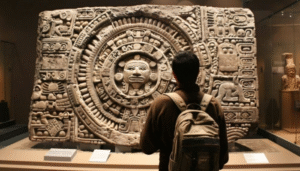
ciulioneros—a term that whispers of mystery, artistry, and a secret tradition waiting to be uncovered. From the moment you encounter the word, you sense there’s a rich tapestry behind it, woven with cultural significance, hidden practices, and intriguing stories. In this article, you’ll journey into the world of ciulioneros—learn their origins, their practices, cultural imprint, modern resurgence, and what makes them relevant in today’s creative landscape. Let’s bring the elusive world of ciulioneros out of the shadows and into the spotlight.
Unveiling the Origins of Ciulioneros
In exploring the origins of ciulioneros, we uncover an enigmatic blend of folklore, artistry, and ritual. Though the word itself isn’t found in mainstream lexicons, ciulioneros evoke imagery of guardians of arcane knowledge—artists, storytellers, and cultural curators who dwell at the fringe between myth and craft. The roots of ciulioneros stretch back through whispered tales passed down across generations, each adding layers of meaning, symbolism, and tradition. They are not just figures of stories—they represent an enduring human impulse to preserve, to create, and to mystify.
The historical tapestry of ciulioneros is stitched with diverse influences: community gatherings, seasonal rituals, and ancestral celebrations. These gatherings often served as rites of passage, where ciulioneros would teach hidden techniques of fabric weaving, story-chanting, or symbolic symbolism through objects. Over time, the stories shifted, but the core remained—ciulioneros as keepers of secret, communal wisdom. This origin myth provides fertile ground for cultural reinvention and creative re-entry in the modern world.
The Cultural Significance of Ciulioneros
Ciulioneros occupy a fascinating space in cultural imagination—acting as conduits between the ordinary and the magical. They embody a society’s longing for deeper meaning, the desire to connect with roots and ritual. Artifacts attributed to ciulioneros—hand-stitched tapestries, coded stories, or engraved talismans—are imbued with symbolic language understood only by those in the know. These objects are more than aesthetic—they are mnemonic devices, linking a community to collective memory and identity.
Furthermore, ciulioneros underscore the importance of oral traditions. Storytelling, in this context, becomes a sacred act. Through episodic recitations, chants, or songs, ciulioneros transmit encoded histories, morals, and teachings. Even without obvious relevance to daily life, these traditions foster a sense of belonging, continuity, and creative curiosity. In an age of rapid change, the cultural role of ciulioneros reminds us of the power held in slow, deliberate, and deeply symbolic ways of transmitting meaning.
Practices and Techniques of Ciulioneros
The techniques attributed to ciulioneros are as varied as they are mysterious. One practice involves “thread-binding”—a method of weaving colored strands into textiles that map stories or genealogies. Each color, knot, or pattern signals a subtle meaning understood by a trained eye. These textiles double as visual codexes, preserving folklore and ancestral knowledge across time. The labor-intensive process is also a meditative ritual, meant to connect creator and viewer in an unspoken dialogue.
Another distinctive practice is “song-inscription,” where stories are embedded into melody and rhythm. Ciulioneros would compose songs with repeating refrains and symbolic allusions. These refrains help listeners mentally catalogue narrative arcs, names, or teachings—even when the meaning remains opaque to outsiders. The practice fosters intimacy: in hiding in plain sight, the songs become an initiation ritual, only fully understood through context, repetition, and community sharing.
Modern Revival and Adaptation of Ciulioneros
In recent years, a subtle revival of ciulioneros has emerged in artistic and cultural scenes looking to reclaim ancestral storytelling methods. Contemporary textile artists draw inspiration from thread-binding to design interactive installations—murals, wall-hangings, or digital projections that encode narratives in patterns, inviting viewers to decode or internalize layered meanings. Art schools and cultural centers host “ciulionero labs,” workshops blending weaving, oral storytelling, and symbolic design to foster creative community building.
Parallel to this, musicians and poets have adopted song-inscription techniques, reimagining them in spoken-word performances and experimental music. They transplant cryptic refrains into ambient arrangements or beat-poems, encouraging listeners to feel more than interpret. Social media movements have begun tagging works inspired by ciulioneros, sparking online communities who share patterns, lyrics, or stories under themes of mystery, tradition, and creative encryption. This revival isn’t about literal ancient continuation—it’s a re-imagined homage, adapted for a digital and creative generation hungry for ritual and connection.
Why Ciulioneros Matter Today
The story of ciulioneros resonates powerfully in a hyper-connected world where depth is often sacrificed for speed. Ciulioneros teach us the value of slow, meaningful creation—the pleasures of craftsmanship, the potency of ritual, and the significance of narrative encryption. In a time when cultural memory is fragmented, ciulioneros model how communities anchor identity through art, song, and symbols. They remind us that meaning isn’t only shared—it’s co-created, discovered, and felt.
Moreover, the concept of ciulioneros invites modern creatives to blur lines between storyteller, artist, and guardian. By valorizing hidden layers and symbolic textures, creators reclaim nuance in their work. Whether weaving a physical piece or crafting an online campaign, thinking like a ciulionero encourages subtlety, surprise, and emotional resonance. In effect, the figure of the ciulionero becomes a metaphor for creative depth and cultural continuity.
Conclusion
The world of ciulioneros—both mythical and newly imagined—is a testament to humanity’s enduring love for mystery, ritual, and creativity. From ancient thread-binding to modern reinterpretations in digital art and verse, ciulioneros remind us to seek the hidden, value the symbolic, and slow down to craft layered meaning. They stand as a powerful metaphor—not just as characters of folklore, but as inspirations for how we might live, create, and connect more deeply in an increasingly surface-oriented world. May the legacy of ciulioneros inspire you to weave stories, inscribe songs, and honor the secrets that make art truly alive.
Frequently Asked Questions (FAQs)
- What does “ciulioneros” mean?
“Ciulioneros” is an invented term suggesting guardians of secret traditions, artists, or storytellers rooted in folklore and ritual. - Are ciulioneros based on real historical figures?
No—ciulioneros are a creative construct combining folkloric motifs like oral storytelling, ritual weaving, and symbolic art. - What is thread-binding in ciulionero tradition?
A ritual weaving technique where patterns, colors, and knots encode narrative or ancestral information for those who know how to read it. - What is song-inscription?
A method of embedding stories or teachings into melody and refrains, creating songs that carry hidden or layered meanings. - How are ciulioneros being revived today?
Through artistic experiments—textile installations, workshops, performance poetry, ambient music—that embrace mystery and symbolic encoding. - Can anyone practice ciulionero-inspired art?
Yes—artists, writers, musicians, and creatives can adopt thread-binding or song-inscription approaches to explore layered storytelling. - Why is the concept of ciulioneros appealing now?
In a fast-paced digital world, ciulioneros appeal through their celebration of slow craftsmanship, ritual, and depth beyond surface. - Do ciulioneros represent any specific culture?
No—they are a symbolic, cross-cultural invention, meant to evoke universal themes of myth, artistry, and tradition. - How can I incorporate ciulionero ideas into my own work?
Try embedding layers of meaning—visual motifs, coded lyrics, symbolic patterns—that invite deeper engagement and exploration. - What can we learn from the myth of ciulioneros?
Ciulioneros teach us to value ritual, preserve cultural memory, and infuse creativity with hidden depths that enrich both creator and audience.






